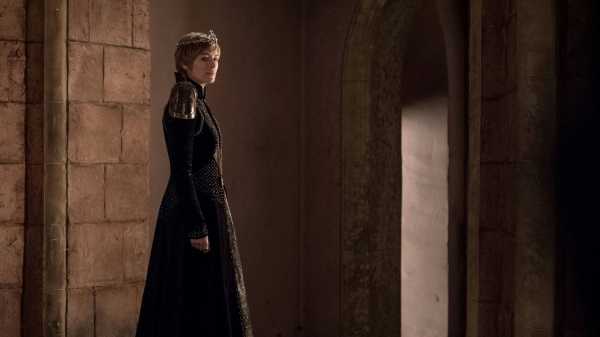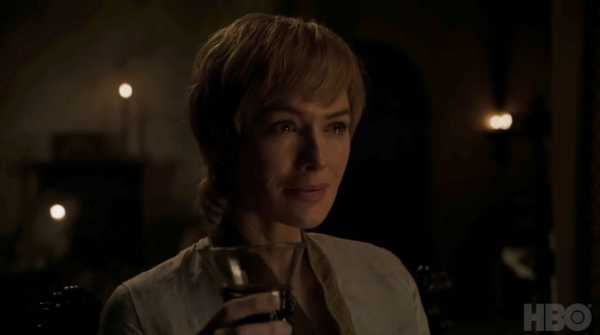
Numbed by the spectacle, we tremble at the sight of an army of mindless zombies, as relentless as they are soulless, marching to extinguish whatever humane life might be left in the world; they act at the order of their ice king, a cold-eyed nihilist who knows neither compassion nor normal feeling. Then we turn away from the congressional Republicans defending Donald Trump, to find some relief watching the new trailer for the final season of “Game of Thrones.”
As a dedicated “G.o.T.”-er—converted by my nineteen-year-old daughter, who got me hooked last year after she’d endured one too many tumid lectures on the superiority of Tolkien—I have been waiting for the promised teaser, eager for the first hints of what the series’ finale might be. Like everyone, my daughter and I watched on Tuesday and then tried hard to read the tea leaves.
The trailer included the Targaryen dragons—reduced in number now to two (the other having turned undead)—and the sight of Jon Snow and Daenerys obviously in a state of pre- and post-canoodle angst. But the single image that seemed most to intrigue and even to enchant people was a shot of Lena Headey, as Queen Cersei, of King’s Landing. Her hair still cut in an appealing post-shame-walk pageboy, she sipped red wine from her cup, as she looked—is it gloatingly or mordantly?—out on some unseen horror. The trailer, last time I checked, had been seen more than twenty-nine million times on YouTube, but Cersei, doing no more than drinking wine while looking superior, seems to be the most memed participant. What, my daughter and I both wondered, could have been so potent about that image?
It is not, as any watcher of the series knows, the first time that Cersei has drunk wine while other people suffered. This tableau has become what I suppose I have to call a visual trope of the series. Viewers will recall the moment in some season past when the Queen (whom Clive James once memorably described as a “beautiful expression of arbitrary terror”) sipped her premier cru while the leading ecclesiastical building of Kings Landing blew up with all of her enemies and many of her friends inside. Though one would hardly go so far as to say that they had it coming, given the scale of the extermination, one could have a smidgen of human feeling for Cersei, given that the blown-up enemies included the High Sparrow, the creepily sanctimonious religious fundamentalist who had caused her to be marched naked through the streets of her own city, while a disciplinary nun strode alongside her with a bell, crying “Shame!” This is not a fate to be wished even on a murderous schemer who once had sex with her brother in front of the bier of their dead son. We all have our faults.
What was it that made that one sickly Cersei sip resonate so widely? The risks of an art-historical education are that it fills your head with images that can’t easily be expunged. In Renaissance and Baroque painting, when a woman is pictured drinking wine, it is certainly an event—but the event is the violation of the norm on women’s sobriety. When in Vermeer, a virginal-looking Dutch woman is shown with a glass in her hand, it’s what’s in the glass and what might happen later that really carries; the drink is a prelude to seduction. In nineteenth-century Impressionist painting, women do consume wine, from time to time, but it’s a sign of their provisional enlistment into the male world, of their participation in bar and bistro culture as, at best, semi-equals. As a rule, women are far more often depicted selling alcohol than enjoying it.
Another vein of pre-Cersei iconography comes to mind, possibly a lot more significant. I mean movie stills that show hardboiled Hollywood actresses, Bette Davis in particular, sipping away at a glass of wine with exactly the look of smug and mordant superiority that Headey has mastered for Cersei. The mood—when, for instance, we see Davis and Miriam Hopkins raising a toast to one another in a still from the nineteen-forties movie “Old Acquaintance”—is not one of intoxication or even mere participation but of a brazen autonomy. By seizing on the male-gendered beverage, as they would say at Sarah Lawrence, the women are actually participating in an act of subverting the patrimony’s control. I sip because I can, I smirk because I choose to, and all of you walkers and dragons do no more than delight me as I do.

GameofThrones / YouTube
Yet those stills still lack the bracing tang of unashamed evil that Cersei produces. Onto that imagery must be laid still one more kind: the picture of the cartoon evil queen, creating misery with her smoking potions. This figure—the Queen from Disney’s “Snow White” being the first, but not the last, of the kind—comes closer to Cersei than anyone else. She holds the same kind of cup, has the same kind of glare, and achieves the same note of sinister self-satisfaction. Still, she doesn’t tend to smile with the same air of self-delight. Like the evil queen, Cersei knows her stuff; yet like Bette Davis, she feels happy to be herself—and together the two emotions, smugness and sinister amusement, make for one formidable Twitter GIF, and woman.
Certainly, I know at least one woman who takes Cersei’s wine-sipping poise as—well, perhaps not as a model, but as a helpful template, for being unafraid to show delight in the misadventures of those who have impeded her. My own wife, sipping at her Oregon pinot noir, strikes a precise replica of the Cersei smile as she bangs out e-mail remonstrances to her colleagues. For a nearby observer, it can be extremely scary to see. We build our own templates for autonomy, it seems, around the imagery that history provides us. It should be quite a season.
Sourse: newyorker.com






